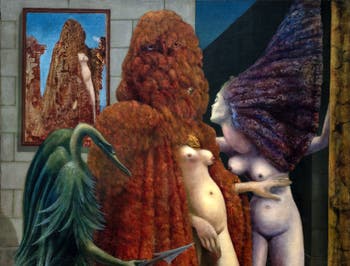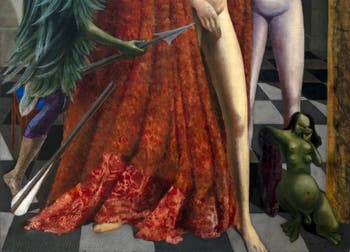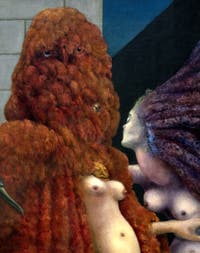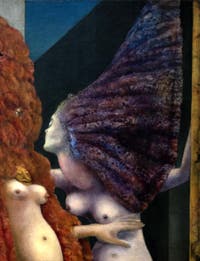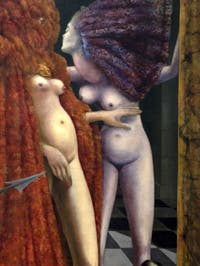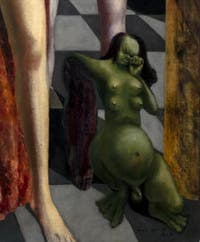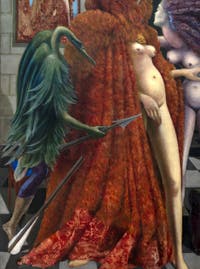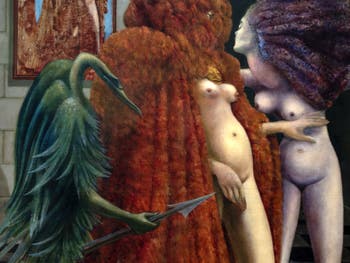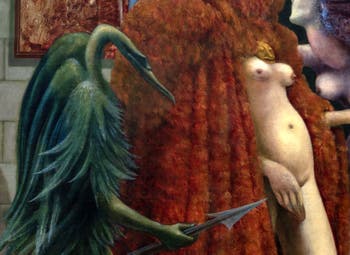Guggenheim Artists | Location | Opening Hours Tickets | Authorizations
Artists Picasso | Pollock | Braque | Calder | Chagall | Dalí | Ernst | Kandinsky | Léger | Magritte | Miró | Modigliani | Brancusi | Brauner | Campigli | Chirico | Delaunay | Delvaux | Duchamp | Fini | Hartung | Kooning | Laurens | Malevich | Man Ray | Masson | Marini | Mondrian | Pegeen | Pevsner | Picabia | Tanguy | Tapies | Twombly | Warhol
Ernst Attirement Bride | The Antipope | The Kiss
Max Ernst “Attirement of the Bride” (La Toilette de la Mariée) at the Peggy Guggenheim Collection in Venice
Painting - Oil on Canvas (129.6 x 96.3 cm) 1940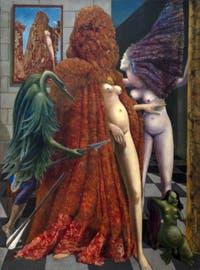
Attirement of the Bride The “Attirement of the Bride” (La Toilette de la Mariée) by Max Ernst, painted in 1940, is a symbiosis of surrealism and symbolism as expressed by Gustave Moreau.
The painter also draws elements from 16th-century German art, including the works of Lucas Cranach the Old.
But contemporary influences are also present, including that of Giorgio de Chirico in the architectural representation of the scene with perspectives and contrasts.
The remarkably refined side of some of the painting elements is in total contrast to the primitive and surreal animals of green colour.
Max Ernst liked to define himself as a bird-man, the one who holds here the phallic symbol of the poisoned arrow.
Also noteworthy is the bride's resumption in the frame hung on the wall, a bride in the middle of ruins.
Ernst Attirement Bride | The Antipope | The Kiss
Artists Picasso | Pollock | Braque | Calder | Chagall | Dalí | Ernst | Kandinsky | Léger | Magritte | Miró | Modigliani | Brancusi | Brauner | Campigli | Chirico | Delaunay | Delvaux | Duchamp | Fini | Hartung | Kooning | Laurens | Malevich | Man Ray | Masson | Marini | Mondrian | Pegeen | Pevsner | Picabia | Tanguy | Tapies | Twombly | Warhol
Guggenheim Artists | Location | Opening Hours Tickets | Authorizations
Back to Top of Page


